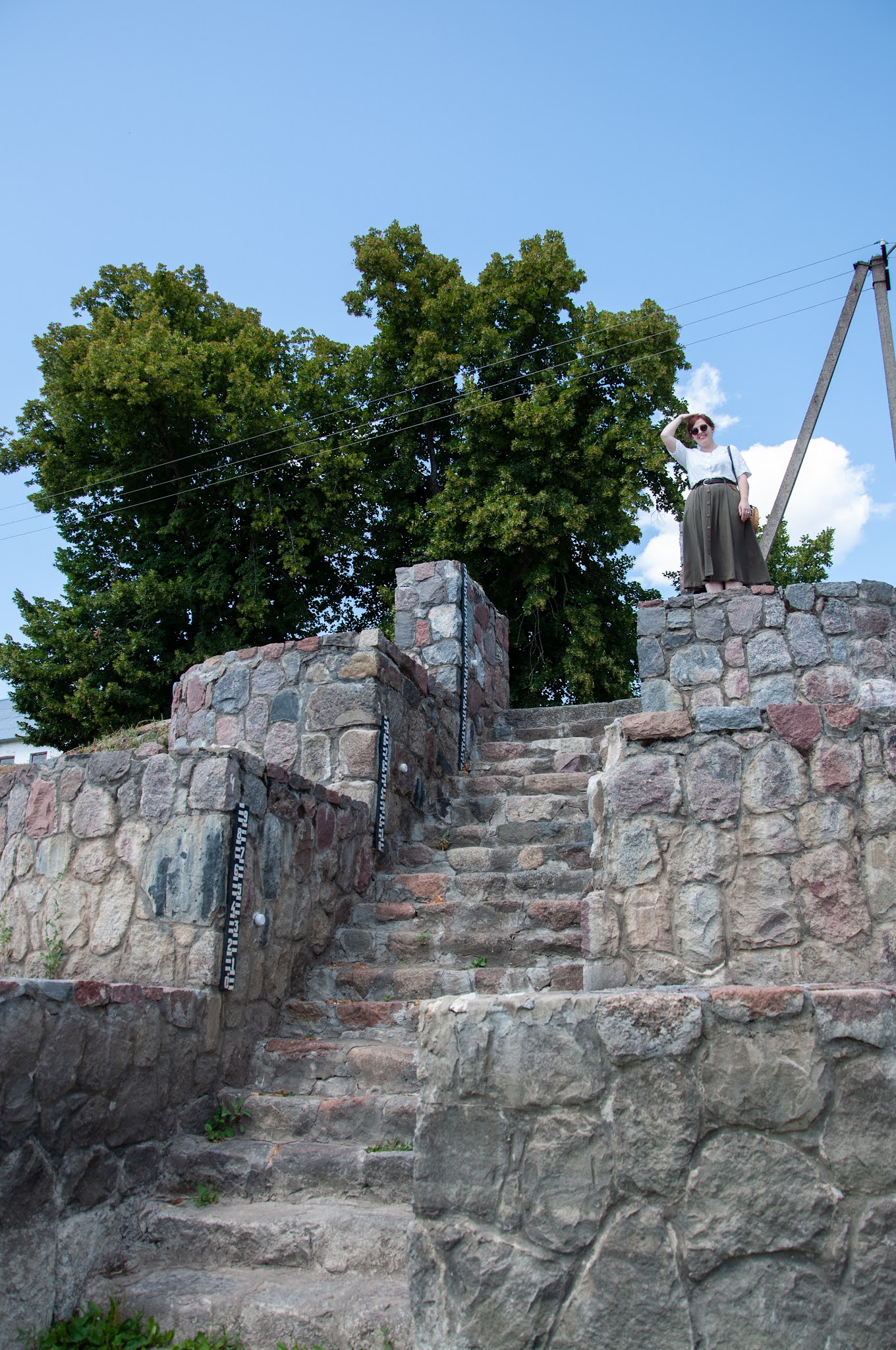When the beginning of our vacation was drawing closer and I was planning what to see when we get to the lovely regions of Jurbarkas and Šakiai, my colleague pointed out that visiting two towns called Smalininkai and Viešvilė is a must in order to appreciate the real identity of this particular part of Lithuania. So I put them on the "Must Visit" list and when we decided to go and to do some thrift-shopping in Smalininkai, naturally the second place to visit was Viešvilė, because these two towns are located just around 10 km apart.
In my previous blogpost I mentioned that I'll write more about the town of Smalininkai in a separate post, so here it is. This town is basically on Lithuania's border with Russia (Kaliningrad Oblast; previously the border was with Prussia), so for the past centuries Smalininkai happens to be always standing next to the borderline. Previously the town was also a river port, so there are some details and elements of the landscape that remind this part of the town's history for both its inhabitants and guests.
Smalininkai are famous for quite a few reasons, one of them being the oldest water measuring station in Lithuania. Although the first contraptions for measuring the level of the water that were installed in 1811 didn't survive to this day, there are massive stone stairs that were built in 1886 and used for the measurement instead. Next to the stairs stands a tiny watchtower built around 1924–1926.
Another important fact about Smalininkai is its oak alley that is the longest in Lithuania (207 trees in total). It was so incredibly majestic to be passing this alley on our way to Viešvilė! The trees are quite old and tall so they give a very nice shade during the hot summer days.
Viešvilė is a small town that's currently famous for it's... fish ladder! It is a special contraption for fish that enables them to migrate upstream. The park around the fish ladder is nice so we stood for quite some time on a wooden bridge trying to spot some fish in the stream.
However, what I liked the most about Viešvilė was not the fish ladder but its architecture. Nothing says more clearly that this part of Lithuania for a long time was under the influence of German culture than tall red brick buildings or various embellishments on the facades of town's houses.
I am sure that both Smalininkai and Viešvilė has a lot more to offer but during that half of a day that we had for visiting these both towns, what we saw was more than enough. So after having a kebab for lunch in Viešvilė's park by the pond we headed back to our guesthouse.
Stay tuned for a post about all the manors that we've seen during our trip!
Photos © Aesthastic

















Comments